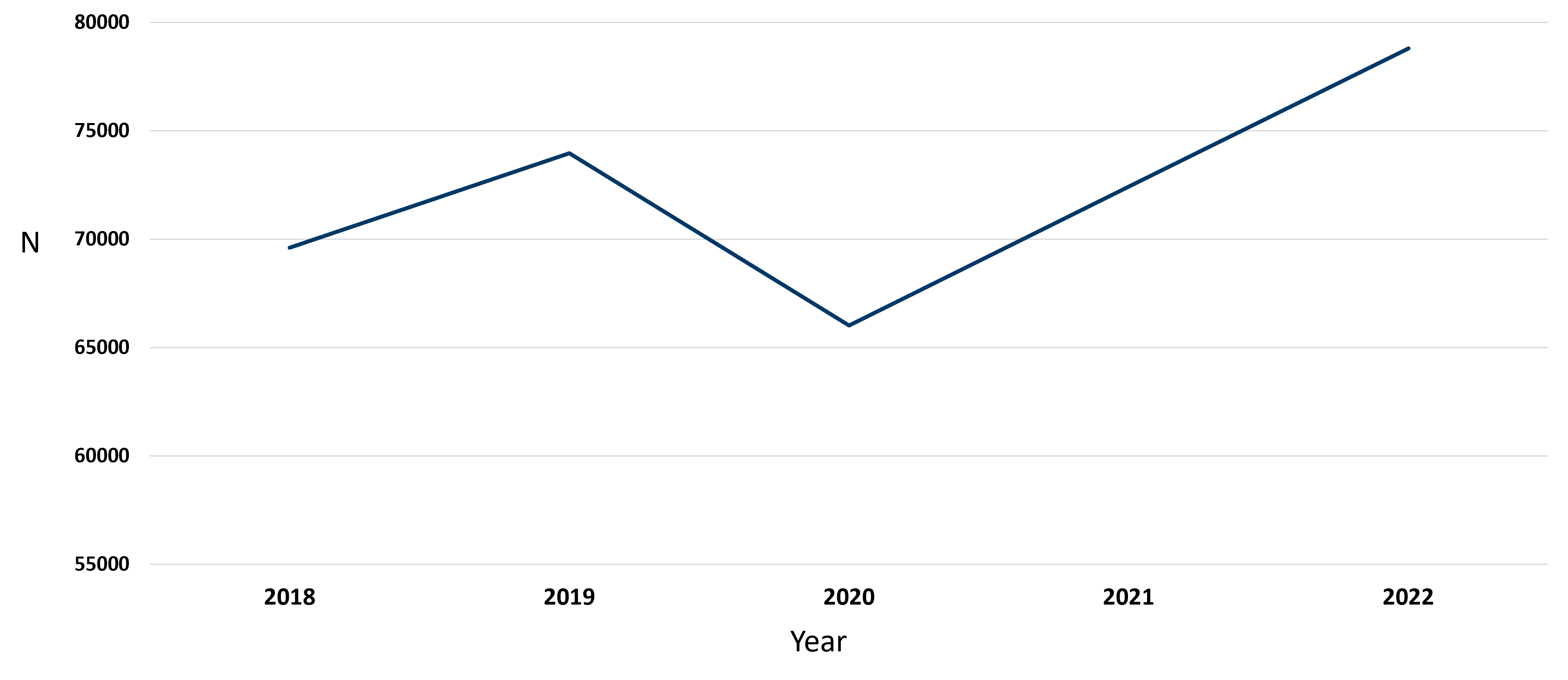Preventing Falls
Related Topics
Preventing Falls
Falls are a leading cause of injury among older adults. As the population of older adults grows, falls and related injuries will also increase. However, falls are not inevitable. There are things you can do to reduce your risk of falling and prevent injury.
In 2024, there were about 12,000 hospitalizations and 30,000 emergency department visits due to falls among adults 65 years and older in Minnesota. In 2023, falls among older adults caused around 1,350 deaths. Minnesota has the second highest rate of deaths due to falls among older adults in the nation, after Wisconsin.
Falls can be very costly. According to the CDC, falls among older adults cost Minnesota more than $700 million in 2014.
Falls among older adults in Minnesota
Figure 1. Number of hospital-treated falls among Minnesota adults 65 years and older, 2016-2024

Since 2016, the number of hospital-treated falls has increased, except for a drop in 2020, which was likely due to the COVID-19 pandemic and people not seeking care. Rates of hospital-treated fall injuries are higher among Minnesota adults 85 years and older compared with those 65-74 or 75-84 years old, as well as among older adult women compared with men. Such group differences may be explained in part by greater frailty, weaker bones, and lower muscle mass among women and older age groups.
From 2016 to 2024, the most common cause of fall-related hospitalizations among older adults in Minnesota was slipping, tripping, or stumbling (70%). Other less common causes of falls among Minnesota adults 65 years and older include falls on stairs or steps (9%), falls due to ice and snow (6%), and falls from bed (5%).
Falls risk assessments and home visits can identify factors that can be changed to reduce falls risk.
Read more
Read Deaths due to falls among Minnesota adults aged 65 years and older (PDF) for more data on falls among older adults.
Reduce the risk of falling
Falls are not a normal part of aging and can be prevented.
- Talk to a health care provider if you are concerned about falling.
- Encourage loved ones to take action to reduce their fall risk.
- Stay active. Moving your body can help you stay strong and improve your balance, which lowers the chance of falling.
- Juniper offers free and low-cost classes to help increase your activity, build strength, and improve balance to reduce your risk of falling. Learn more at yourjuniper.org/no-falls.
- Walking is a great way to move your body. Join the Walk with Ease program.
- Enjoy healthy foods. Proper nutrition can help keep your muscles strong. Having low levels of some nutrients, such as vitamin D or calcium, can contribute to osteoporosis – or weak bones – making falls more harmful.
- Identify and fix potential fall hazards in your home, such as adding hand bars in the bathroom and keeping floors free of clutter.
- Follow the treatment plan for any existing conditions you have. Some may increase your risk of falling. For example, impaired vision may make it harder to see where you are walking, and some medications for other conditions can cause dizziness, making it harder to balance.
Health care providers
- Health care providers can invest in physical activity promotion and recommend evidence-based interventions for their patients.
- Falls prevention programs and increased physical activity can help improve strength and balance to prevent falls. Falls risk assessments and home visits can also identify factors that can be changed to reduce falls risk.
- The STEADI Initiative (Stopping Elderly Accidents, Deaths, and Injuries) offers several resources and tools to help providers assess risk, talk to patients about falls, and make appropriate referrals. The STEADI-Rx guide can help pharmacists identify medication-related risks: STEADI-Rx Older Adult Fall Prevention Guide for Community Pharmacists (PDF)
Communities
Use CDC’s Preventing Falls: A Guide to Implementing Effective Community-Based Fall Prevention Programs (PDF) toolkit to find opportunities to reduce falls in your community. Community organizations, leaders, advocacy groups, social services and health care can work together to provide protective factors and supports that address the biological, behavioral, and environmental risks for falls.
More information
- Visit CDC: About Older Adult Fall Prevention and National Institute on Aging: Falls and Fractures in Older Adults for more information and tips to stay safe and prevent injury from falls.
- The Minnesota Board on Aging offers several resources and links to a risk check-up that can help you assess your own risk for a fall.
- Preventing Falls at Home: Room by Room outlines potential falls risk factors within your living space and how to adjust them.
- Area Agencies on Aging are regional organizations that provide services and supports for aging adults and their families. Find one near you to connect to resources and classes that can help prevent falls.
- Senior Linkage Line: 800-333-2433
- Learn more about senior health care coverage options from the Department of Human Services.